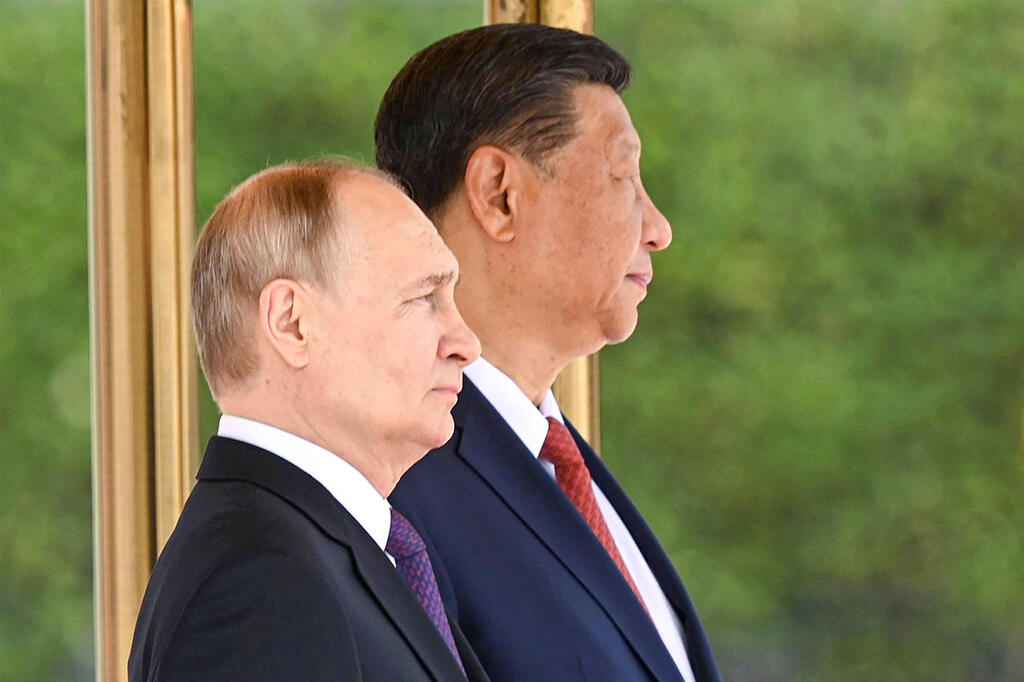The Arctic region has become a focal point of geopolitical tensions and strategic interests among major powers like the United States, Russia, China, and NATO countries.
Russia has significantly increased its military presence and bases in the Arctic region.
1 View gallery


Russian President Vladimir Putin and Chinese leader Xi Jinping
(Photo: AFP PHOTO / RUSSIAN PRESIDENTIAL PRESS OFFICE)
China has established research stations, engaged in diplomatic efforts, conducted naval operations, and asserted its interests as a "near-Arctic state" in the region.
The melting Arctic ice has opened new maritime routes and access to natural resources, prompting nations to strengthen their military, industrial, and research presence, leading to increased competition and concerns over territorial claims and exclusive economic zones (EEZs).
China and Russia have launched the Arctic Express No 1 rail-sea cargo service, moving cargo by rail from Moscow to the Russian port of Arkhangelsk and then shipped across the Arctic and North Pacific oceans to ports in China, aiming to develop a fleet of five ice-classed boxships by 2027.
The United States, Canada, and Finland have formed the Icebreaker Collaboration Effort (ICE Pact) to counter Russian and Chinese influence in the Arctic, while NATO has accused China of enabling Russia in the Ukraine conflict, raising concerns about Euro-Atlantic security.
The proposed "Ice Pact" aims to reinforce collaboration on industrial policy with allies, including operational interoperability, workforce development exchanges, potential investments in U.S. shipyards, and training of American workers to increase competitive edge in strategic industries like shipbuilding.
The militarization of the Arctic is seen as part of larger plans by Canada and the US to expand their presence in the region.
China's expanding Arctic ambitions, including potential dual-use research at its "Yellow River Station" in Svalbard, Norway, challenge the U.S. and NATO.
Canada and NATO allies are concerned about Russia and China potentially using the new Arctic shipping routes for military purposes.
Canada is acquiring a dozen conventionally powered submarines capable of traveling under sea ice to detect, track, deter, and defeat adversaries in Canadian waters.
The U.S. is concerned about declining shipbuilding capacity as a national security vulnerability concerning China, with outdated polar icebreakers and delays in acquiring new ones under the Polar Security Cutter program.
This article was written in collaboration with Generative AI news company Alchemiq
Sources: Newsweek, South China Morning Post, The Guardian, Reuters, Indian Express, The Sacramento Bee, The Spectator, World Socialist Web Site, RealClearDefense, EurAsian Times, Firstpost, China Daily, The Straits Times, Splash247.

